Investigation of the effects of platform motion on the aerodynamics of a floating offshore wind turbine*
Yuanchuan LIU, Qing XIAO, Atilla INCECIK, De-cheng WAN (万德成)
Investigation of the effects of platform motion on the aerodynamics of a floating offshore wind turbine*
Yuanchuan LIU1, Qing XIAO1, Atilla INCECIK1, De-cheng WAN (万德成)2
1. Department of Naval Architecture, Ocean and Marine Engineering, University of Strathclyde, Glasgow, UK,E-mail: yuanchuan.liu@strath.ac.uk 2. State Key Laboratory of Ocean Engineering, School of Naval Architecture, Ocean and Civil Engineering, Shanghai Jiao Tong University, Shanghai 200240, China (Received September 17, 2015, Revised November 5, 2015)
Along with the flourishing of the wind energy industry, floating offshore wind turbines have aroused much interest among the academia as well as enterprises. In this paper, the effects of the supporting platform motion on the aerodynamics of a floating wind turbine are studied using the open source CFD framework OpenFOAM. The platform motion responses, including surge, heave and pitch, are superimposed onto the rotation of the wind turbine. Thrust and torque on the wind turbine are compared and analysed for the cases of different platform motion patterns together with the flow field. It is shown that the movement of the supporting platform can have large influences on a floating offshore wind turbine and thus needs to be considered carefully during the design process.
floating offshore wind turbine, superimposed platform motion, aerodynamics, OpenFOAM
Introduction
Over the last few decades, wind energy has been widely adopted as a clean and renewable energy sou- rce. According to a report published by the European Wind Energy Association[1], the share of renewable energy in total new power capacity installations in the European Union has grown from 22.4% to 72% during 2000 and 2013. Of all 385 GW of new power capacity installations in the EU since 2000, over 28% has been wind power. While offshore wind business is growing rapidly, new generation floating offshore wind turbines are rapidly developed which are planned to be installed in deep water areas[2-5]. The main advantages of floating wind turbines include: the shallow water sites for fixed wind turbines are limited, wind source far off the coast is even more abundant and the public concerns about visual impacts caused by onshore turbines can be minimized.
Unlike its fixed counterpart, a floating wind tur- bine must be supported by a floating platform which, however, further complicates the design process. The upper turbine and the lower supporting platform are coupled/integrated in one way or another. For exa- mple, the thrust and torque acting on the turbine influences the dynamic response of a floating platform while the movement of the latter also affects the posi- tion and orientation of the turbine thus its aerodyna- mic performance. As far as the authors are aware of, most research on the aerodynamic analysis in this area has been performed by decoupling the movement of the platform from the turbine system as a simplifica- tion. For instance, Jeon et al.[6]adopted a vortex method to simulate a floating wind turbine undergoing a prescribed pitch motion. It was shown that when the platform moves in the upward direction to the position at a maximum velocity, thrust reaches a maximum due to the large relative velocity. In their paper, the impa- cts of the pitching motion on the induced velocity were also studied. De Vaal et al.[7]investigated a floa- ting wind turbine with a prescribed surge motion using the BEM method with various dynamic wake models as well as the actuator disk method. Their results show that the integrated rotor loads obtained by various methods were nearly identical, indicating that the existing engineering models to deal with wake dynamics are sufficiently accurate to cope with the additional unsteady surge motion of a wind turbine rotor in terms of its global force analysis. In the work of Tran and Kim[5]and Tran et al.[8], commercial CFD software packages were used to study the aerodyna- mic performance of a FOWT experiencing a platform pitching motion. Results were compared with those from other simplified models and demonstrated that the aerodynamic loads of the blade change drastically with respect to the frequency and amplitude of plat- form pitching motion.
It is seen that most existing research has focused on a prescribed single degree of freedom (DoF) mo- tion of the floating platform. However, from the per- spective of a floating structure in reality, among all the six degrees of freedom of motion responses, surge, heave and pitch are usually present at the same time. By taking these three degrees of freedom into conside ration simultaneously, a more realistic representation for the motion of platform could be made, and thus the impact of the platform motion on the aerodynamic performance of a floating wind turbine could be better illustrated.
In this paper, the open source CFD framework known as OpenFOAM[9]is adopted to study the effe- cts of the supporting platform motion on the aerody- namics of a floating wind turbine. The platform mo- tion responses, including surge, heave and pitch, are superimposed onto the rotation of the wind turbine.
1. Methodology
In the present study, the pimpleDyMFoam solver in OpenFOAM is used which is able to solve the tran- sient, incompressible and single-phase flow of Newtonian fluids with the moving mesh capability[9]. The incompressible Reynolds-averaged Navier-Stokes (RANS) equations with theSST turbulence model are discretised using the finite volume method (FVM). The PIMPLE (merged PISO-SIMPLE) algori- thm is applied to deal with the velocity-pressure coupling in a segregated way. A second-order back- ward scheme is used for the temporal discretisation and a second-order upwind scheme is applied for the convective term.
OpenFOAM implements a sliding mesh techni- que called arbitrary mesh interface (AMI) for rotating machinery problems[10], which allows the simulation across disconnected, but adjacent, mesh domains either stationary or moving relative to one another. The AMI method is adopted in the present study to deal with the rotation of wind turbine. The prescribed surge, heave and pitch motion are applied to the whole computational domain including the rotor in such a way that the position and rotation of the turbine rotor are determined by the superimposed motion of its own rotation and the 3DoF platform movement.
2. Computational model
2.1
The NREL Phase VI wind turbine is adopted in the present study. Though this model was initially designed for the application in onshore scenarios, the availability of experimental data[11from the National Renewable Energy Laboratory (NREL) makes it a popular validation case to verify various modelling results for aerodynamic performance of wind turbines. Taking this advantage, the NREL Phase VI model is used in the present study for validation first and then as a base model for cases with prescribed platform motion.
The NREL Phase VI wind turbine is a two- bladed upwind model and each blade adopts the NREL S809 airfoil profile as shown in Fig.1 at most of its span-wise cross sections. The length of the blade is 5.029 m from tip to the rotation axis. Of all the configurations tested by NREL, a tip pitch angle of 3ois used and zero yaw angle is applied consistently in the present study. A CAD model for the wind turbine is shown in Fig.2. The hub, nacelle and tower are not considered here for simplicity. Detailed geometric parameters can be found in the NREL report[11].
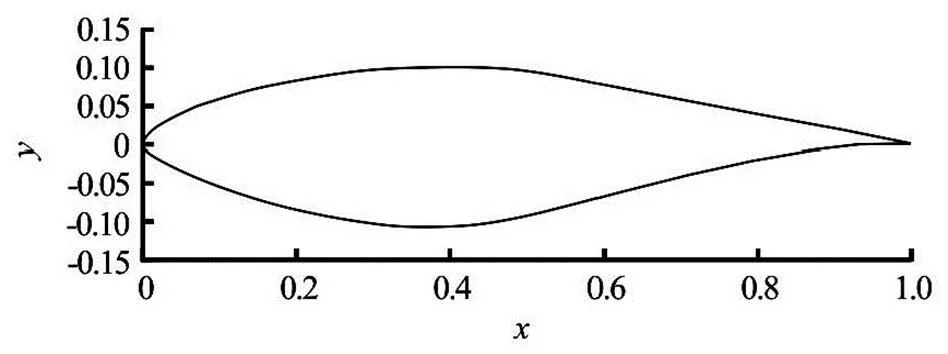
Fig.1 Profile of NREL S809 airfoil

Fig.2 CAD model of NREL Phase VI wind turbine
2.2
The overall computational domain is a large cyli- nder shown in Fig.3 with a diameter of, wherestands for the diameter of the rotor. The inlet and out- let boundaries areandaway from the rotor, respectively. The rotor is surrounded by a small cylin- drical domain and the faces connecting the two domains are defined as the AMI sliding interfaces. For a fixed wind turbine simulation, the inner small cyli- nder region (or rotor region) rotates about a predefi- ned axis while the outer domain (or stator region) maintains static.
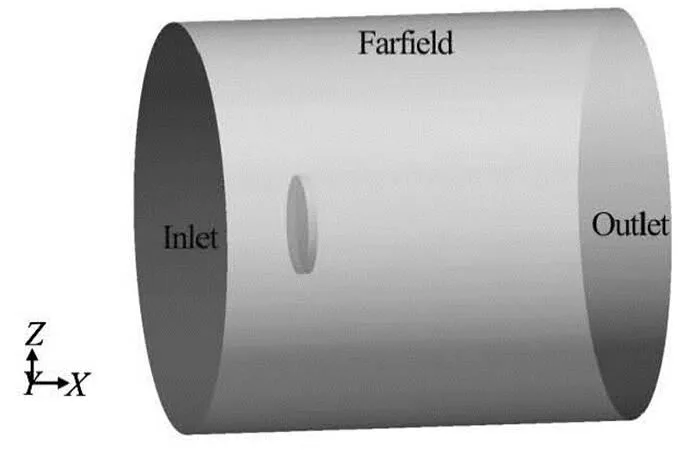
Fig.3 Overall computational domain
The built-in snappyHexMesh utility in OpenFOAM is adopted for mesh generation. This uti- lity is very powerful yet easy to use and capable of generating hexahedra dominant mesh[12]. An illustra- tion of the overall computational mesh can be seen in Fig.4. Detailed mesh near the blade is also shown in Fig.5.
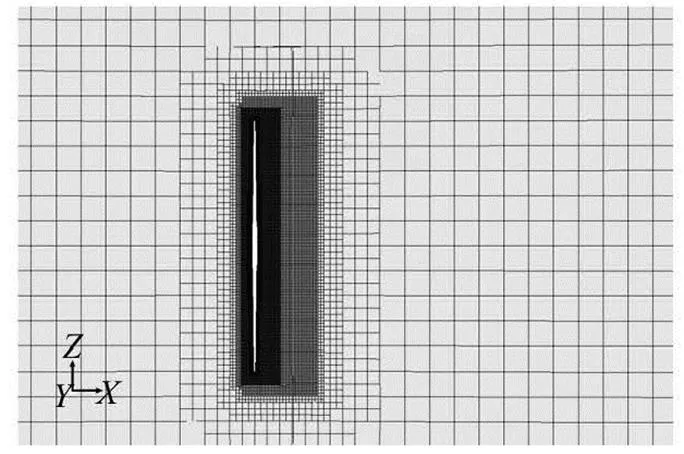
Fig.4 Overall computational mesh

Fig.5 Detailed mesh near blade
3. Validation
Validation is first carried out for the originally fixed wind turbine model. Four different wind veloci- ties (5 m/s, 10 m/s, 15 m/s and 25 m/s) are investiga- ted and the rotational speed is fixed at 72 RPM.
3.1
Thrust and torque are two important aerodynamic performance parameters for a wind turbine as they represent the integrated loading on the turbine. Due to the unsteadiness caused by flow turbulence, both thru- st and torque vary with time. The results presented here are obtained by averaging the time history curves over a certain period of time. A comparison between the present results and data obtained from the NREL report[11]is demonstrated in Fig.6. The vertical bars in the figures represent the experimental standard devia- tion. Numerical results through CFD simulation by Li et al.[13]are also plotted for comparison.
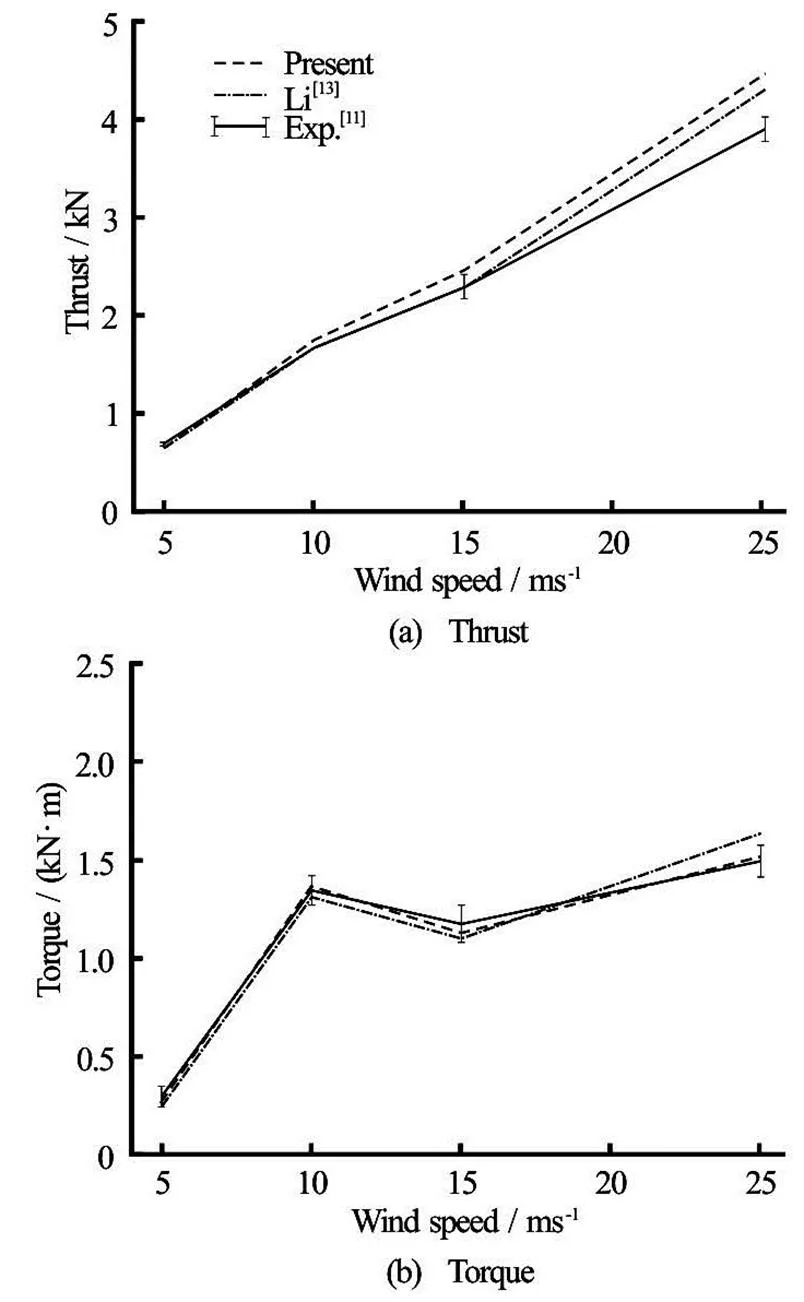
Fig.6 Comparison of thrust and torque
As is seen from the figures, an overall good agreement has been achieved for the present results and the experimental data, indicating the validity of applying the current CFD solver to wind turbine simu- lation. Meanwhile, both the thrust and the torque from present study also agree remarkably well with those from Li’s paper, which further validates the modelling tool.
3.2
Pressure coefficient can reflect flow information in a more detailed manner than the thrust and torque. It is defined as
Figure 7 shows the comparison between predi- cted and measured pressure coefficients at three cross sections for four different wind velocity values. As can be seen from the figures, the predicted pressure coefficients agree quite well with the experimental data in all four wind conditions. Although some dis- crepancies are notable at the incoming wind velocity of 15 m/s, similar differences were also found by Li et al.[13]and Hsu et al.[14].
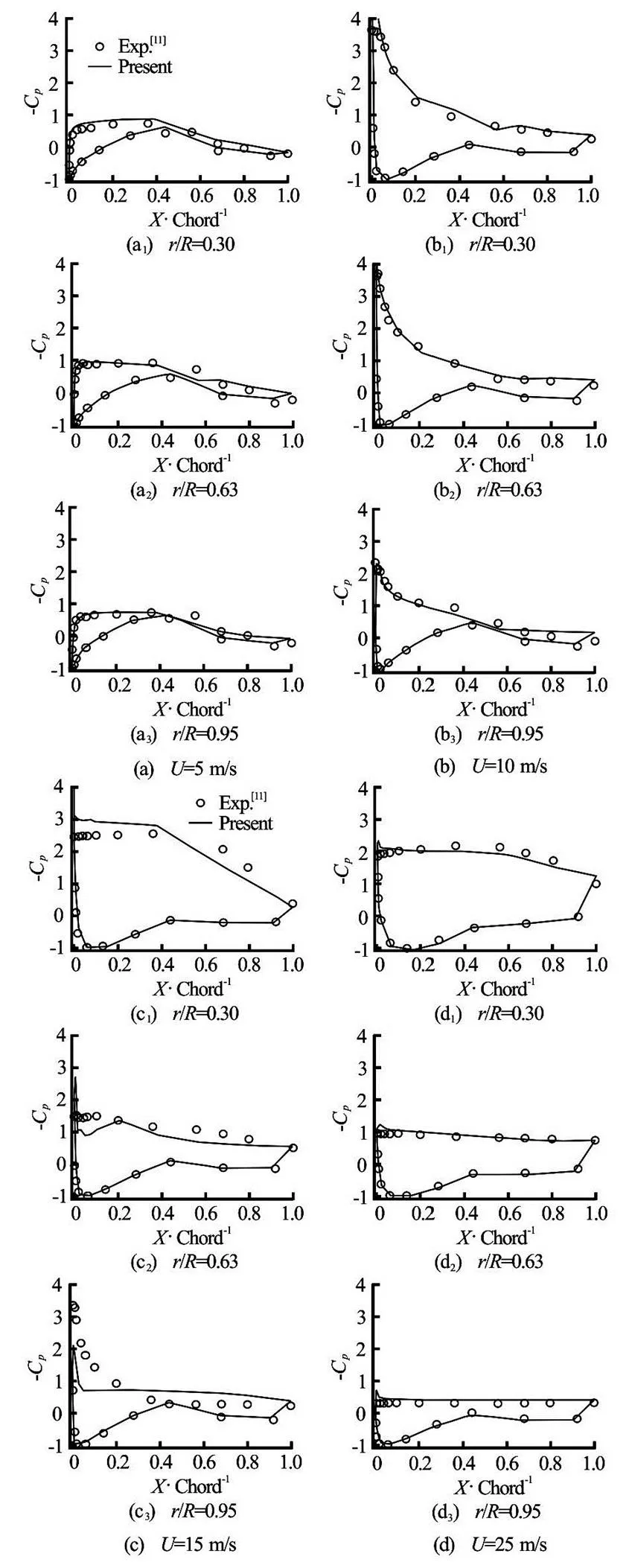
Fig.7 Pressure coefficients for different velocities
4. Working conditions
To investigate the effects of platform motion on the aerodynamic performance of the wind turbine, prescribed 3DoF platform motion responses (surge, heave and pitch) are superimposed in a sinusoidal form onto the rotation of the turbine rotor. Since the wind turbine was originally designed for onshore app- lications, assumptions are made for this offshore situa- tion.
Offshore wind turbines usually have larger rotor diameters than onshore turbines. In the present study, the turbine under investigation is assumed to be the 1:16 scaled model of a real offshore floating wind tur- bine with a blade length of about 80 m. The amplitu- des of the surge, heave and pitch are estimated based on the 1:16 scale ratio as 0.25 m, 0.1 m and 2° respe- ctively. The centre of platform pitch motion is 6 m away in the z direction from the centre of rotation for the turbine rotor. Under regular wave conditions, the motion period for all three DoF’s is the same as the incoming wave period. Four different values for the motion period are taken to investigate its influence, which are listed in Table 1. The Froude scaling law is used to determine the periods in model scale. For all cases, the wind velocity is kept at 15 m/s.
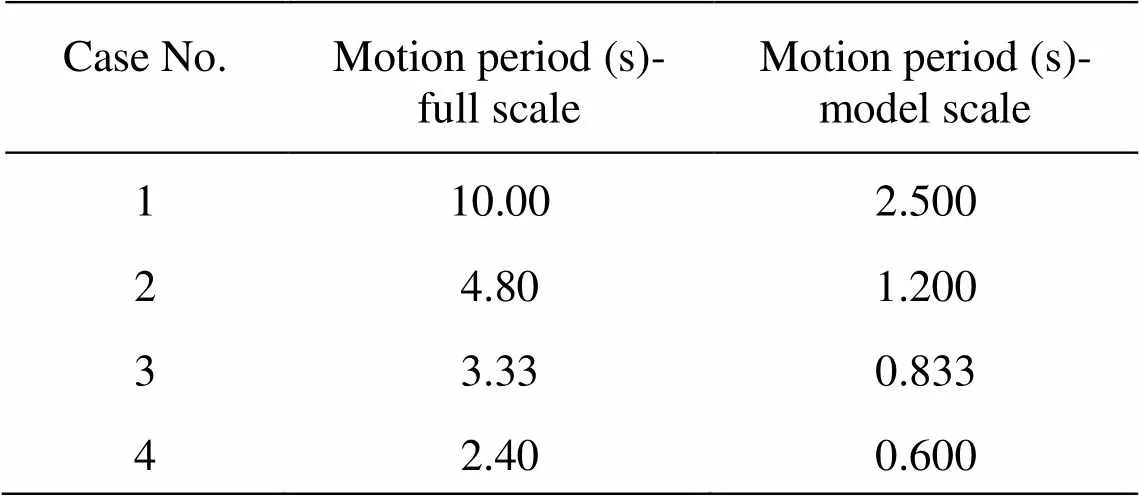
Table 1 Working conditions
5. Results and discussion
5.1
Figure 8 depicts the thrust and torque time histo- ry associated with different motion periods. It is seen that both the thrust and the torque are largely affected by the superimposition of platform motion. In fact, the smaller the motion period is, the larger the amplitudes of thrust and torque are, though the time-mean values are almost the same as those under fixed conditions. Taking motion periodfor example, the ma- ximum thrust is almost 40% higher than the mean value while the minimum thrust is about 40% lower. Considering the large difference between the extremes, structural stress and related fatigue issue should be taken into account during the design procedure. Varia- tion of torque may also directly influence the instanta- neous power output generated by the turbine.
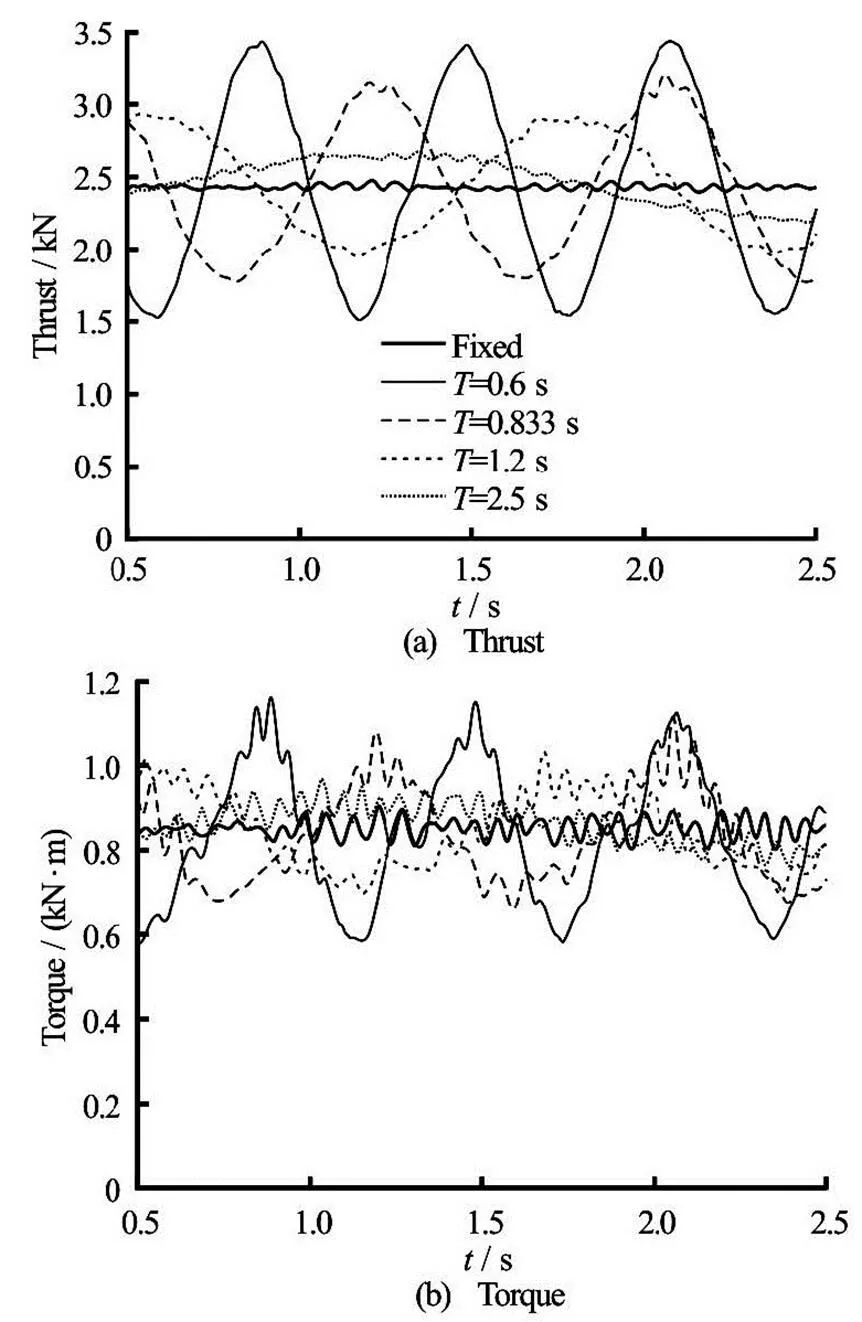
Fig.8 Comparison between thrust and torque in motion of va- rious periods
5.2
Apart from the thrust and torque, the prescribed platform motion also plays a role in the flow field around the blades and rotor. Given the time period of, Fig.9 demonstrates the pressure distribution near the turbine rotor at four time instants. A slice is cut atat the beginning and rotates along with the turbine.
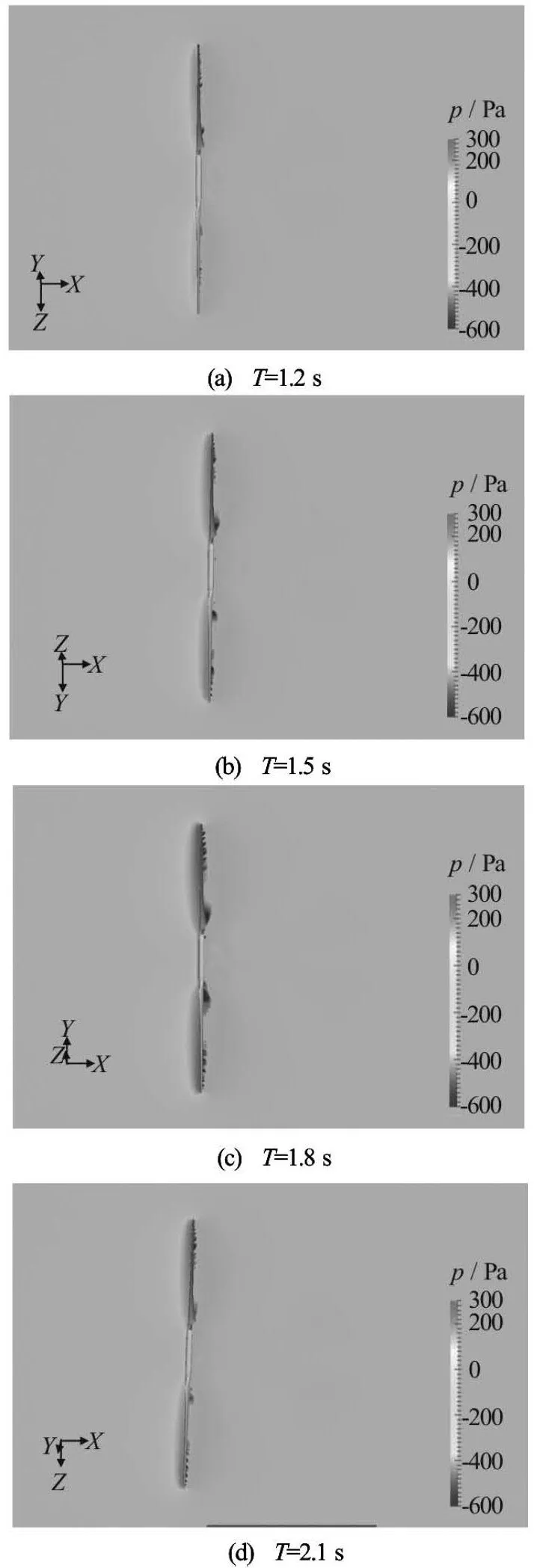
Fig.9 Instantaneous pressure distributions near turbine rotor
Figure 10 shows the prescribed platform motion profile. At 1.2 s, the platform is at its starting position, but velocity is at its maximum. For a surge motion, it means that the surge velocity is in the same direction as the wind velocity, thus a reduced relative wind velocity is achieved. The pressure contour displayed in Fig.9 shows a small pressure variation before and after the rotor, corresponding to the minimum thrust in Fig.8. At 1.5 s, although the motion is at its maximum, the velocity becomes zero just as the case without superimposed platform motion. The thrust at this instant is very close to that of a fixed wind turbine as shown in Fig.8. The pressure difference becomes larger, so is the thrust. At 1.8 s, surge velocity reaches its maximum in the direction opposite to the wind velocity, making the relative wind velocity largest. The large pressure distribution in Fig.9 indicates the maximum thrust in Fig.8. The situation at 2.1 s is very similar to that at 1.5 s.
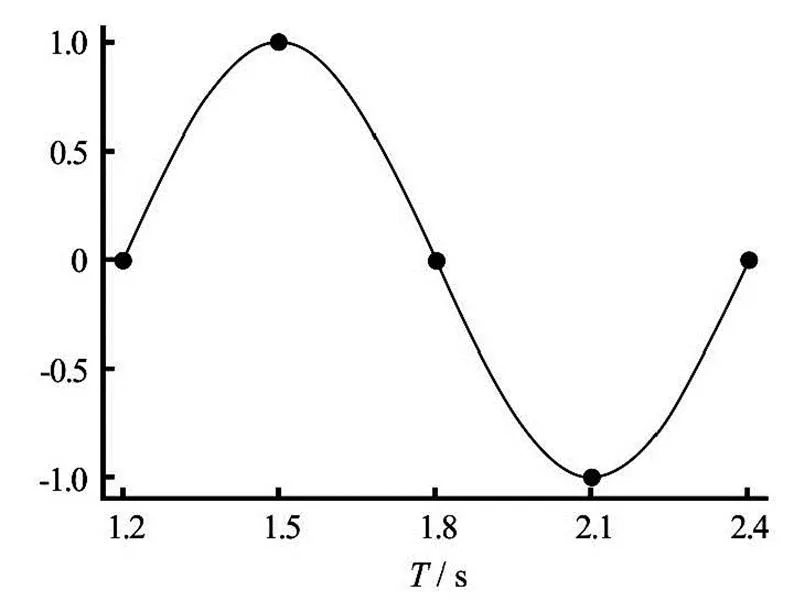
Fig.10 Motion profile vs. time
Figure 11 shows the vortices contours using the iso-surface of the second invariant of the rate of strain tensorat. Strong vortices can be seen near the blade tips as well as the blade root, where the geometry quickly changes from the NREL S809 airfoil profile to cylindrical sections. The vertical stru- cture is also clearly influenced by the prescribed plat- form movement. When the turbine moves in the wind direction, it interferes with its wake, resulting in the decrease of vortices as is seen in Figs.11(a)-11(b). However, when the turbine moves in the direction opposite to the wind velocity, vortices increase again as shown in Figs.11(c)-11(d).nclusion
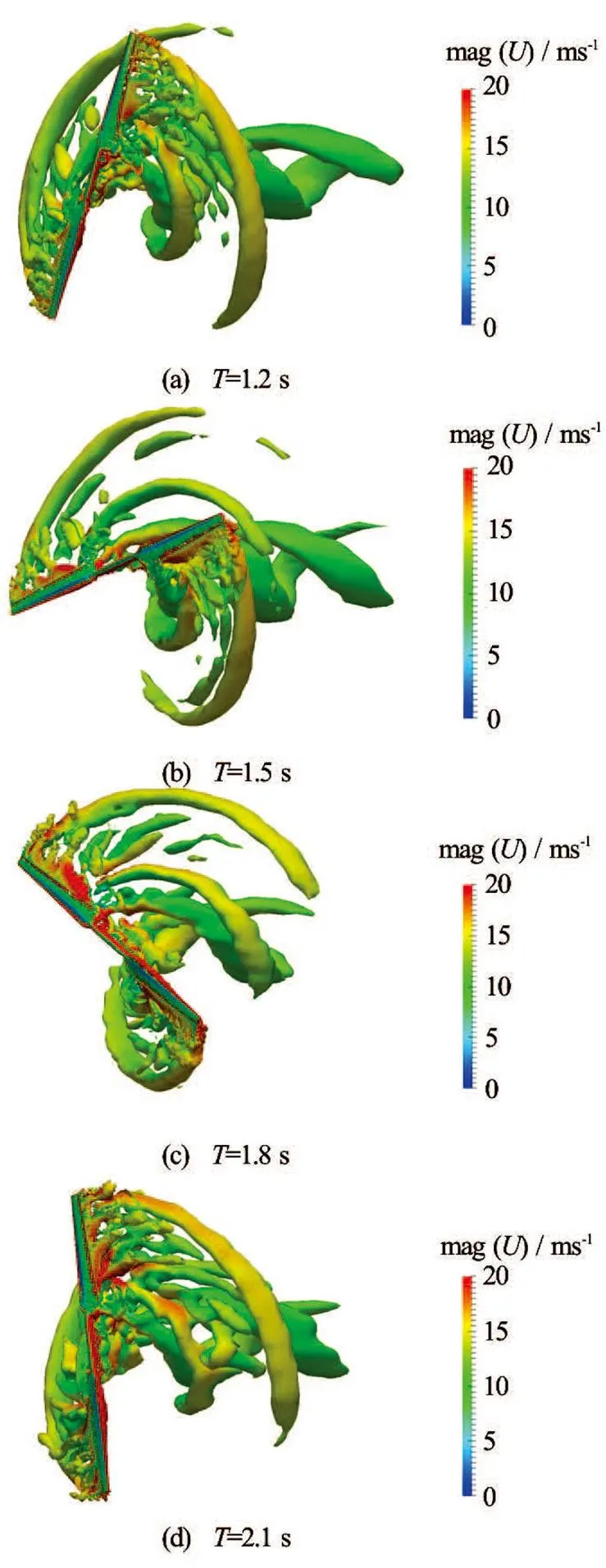
Fig.11 Instantaneous vortices visualisation coloured by velocity magnitudes
In this paper, an open source CFD solver was applied to perform an aerodynamic simulation for the NREL Phase VI wind turbine model. Validation was firstly carried out against experimental test under fixed platform conditions. Numerical experimentation was later carried out by superimposing the prescribed platform 3DoF motion (surge, heave and pitch) onto the rotation of the wind turbine to simulate a floating wind turbine moving along with the supporting plat- form. Various motion periods were tested and aerody- namic thrust and torque of the wind turbine were analysed. It was found that both thrust and torque are largely influenced by the prescribed platform motion, indicating that the motion response of the supporting platform for a floating wind turbine should be taken into account during the design procedure. Fluid field properties such as pressure and vortices were also visualised and examined. In the next step, the intera- ction between the platform and waves as well as wind will be modelled so that the platform motion is direct- ly calculated rather than prescribed to better reflect the real operating conditions.
Acknowledgement
Results were obtained using the EPSRC funded ARCHIE-WeSt High Performance Computer (www.archie-west.ac.uk). EPSRC (Grant No. EP/K000586/1). This work also used the ARCHER UK National Supercomputing Service (http://www. archer.ac.uk).
References
[1] CORBETTA G., PINEDA I. and AZAU S. et al. Wind in power: 2013 european statistics: European wind energy association[R]. 2014.
[2] DeepCwind. DeepCwind floating offshore wind turbine project[OL].http://www.deepcwind.org, 2014.
[3] Fukushima FORWARD. Fukushima floating offshore wind farm demonstration project[OL].http://www.fukushima-forward.jp/english, 2014.
[4] QUALLEN S., XING T. and CARRICA P. et. al. CFD Si- mulation of a floating offshore wind turbine system using a quasi-static crowfoot mooring-line model[J]. Journal of Ocean and Wind Energy, 2014, 1(3): 143-152.
[5] TRAN T.-T., KIM D.-H. The platform pitching motion of floating offshore wind turbine: A preliminary unsteady ae- rodynamic analysis[J]. Journal of Wind Engineering and Industrial Aerodynamics, 2015, 142: 65-81.
[6] JEON M., LEE S. and LEE S. Unsteady aerodynamics of offshore floating wind turbines in platform pitching motion using vortex lattice method[J]. Renewable Energy, 2014, 65(5): 207-212.
[7] De VAAL J. B., HANSEN M. O. L. and MOAN T. Effect of wind turbine surge motion on rotor thrust and induced velocity[J]. Wind Energy, 2014, 17(1): 105-121.
[8] TRAN T., KIM D. and SONG J. Computational fluid dynamic analysis of a floating offshore wind turbine expe- riencing platform pitching motion[J]. Energies, 2014, 7(8): 5011-5026.
[9] OpenFOAM. The OpenFOAM website[OL].http://www.openfoam.com, 2014.
[10] OpenFOAM. Arbitrary mesh interface (AMI)[OL].http://www.openfoam.org/version2.1.0/ami.php, 2014.
[11] HAND M. M., SIMMS D. and FINGERSH L. et. al. Unsteady aerodynamics experiment phase VI: Wind tunnel test configurations and available data campaigns[R]. Golden, Colorado, USA: National Renewable Energy Laboratory, 2001, NREL/TP-500-29955.
[12] OpenFOAM. Mesh generation with the snappyHexMesh utility[OL].http://www.openfoam.org/docs/user/snappyHexMesh.php#x26-1510005.4, 2014.
[13] LI Y., PAIK K.-J. and XING T. et. al. Dynamic overset CFD simulations of wind turbine aerodynamics[J]. Rene- wable Energy, 2012, 37(1): 285-298.
[14] HSU M.-C., AKKERMAN I. and BAZILEVS Y. Finite element simulation of wind turbine aerodynamics: valida- tion study using NREL Phase VI experiment[J]. Wind Energy, 2014, 17(3): 461-481.
* Biography: Yuanchuan LIU (1990-), Male, Ph. D. Candidate
Corresponding author: Qing XIAO, E-mail: qing.xiao@strath.ac.uk
10.1016/S1001-6058(16)60611-X 2016,28(1):95-101
水动力学研究与进展 B辑2016年1期
- 水动力学研究与进展 B辑的其它文章
- Flow, thermal criticality and transition of a reactive third-grade fluid in a pipe with Reynoldsʼ model viscosity*
- Mixing of two different electrolyte solutions in electromagnetic rectangular mixers*
- A new biomimicry marine current turbine: Study of hydrodynamic performan- ce and wake using software OpenFOAM*
- Study of bedload transport in backwater flow*
- Experimental study of water and dissolved pollutant runoffs on impervious surfaces*
- A numerical model for pipelaying on nonlinear soil stiffness seabed*
